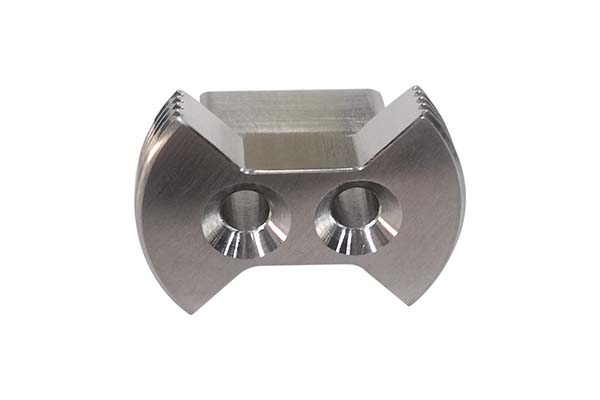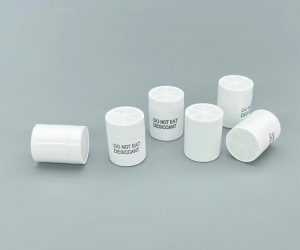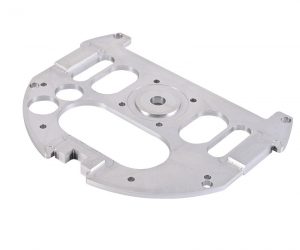Understanding Fast Prototyping
Definition and Basics
Fast prototyping, also known as rapid prototyping, is the process of quickly creating a preliminary model, sample, or mock - up of a product or system. This initial version is not a polished final product but rather a representation that allows stakeholders to visualize, test, and validate the fundamental concepts and functions of the intended design. For Yigu Technology example, in the development of a new smartphone, a fast prototype might be a simple 3D - printed shell with placeholder components to demonstrate the form factor, button placement, and basic assembly, long before the actual electronic components are integrated.
The Core Process
- Concept Conception: This is the starting point where the initial idea for the product is born. It could be inspired by market needs, technological advancements, or user pain points. For instance, a team might identify the need for a more user - friendly fitness tracker in the market, leading to the concept of a new device with innovative tracking features and an intuitive interface.
- Design: Using computer - aided design (CAD) software, engineers create detailed digital models of the product. This includes specifying dimensions, shapes, and the relationships between different components. In the case of the fitness tracker, the design phase would involve creating a 3D model of the device, showing the display area, sensor placement, and the overall ergonomic design.
- Make: There are numerous techniques available for creating the prototype. Some common ones include 3D printing, which builds the prototype layer by layer from a digital model; CNC machining, where a computer - controlled machine removes material from a solid block to create the desired shape; and injection molding for creating plastic parts in high - volume prototypes. For the fitness tracker, a 3D - printed prototype might be created first to quickly test the form factor, followed by injection - molded plastic parts for more accurate and durable prototypes.
- Testing: The prototype is subjected to a series of tests to evaluate its performance, functionality, and usability. For the fitness tracker, this could include testing the accuracy of the sensors, the responsiveness of the touch - screen interface, and the battery life.
- Evaluation: Based on the test results, the prototype is evaluated, and feedback is collected from various stakeholders, such as engineers, designers, and potential users. This feedback is used to identify areas for improvement and to make informed decisions about the next steps in the development process. If the fitness tracker prototype has issues with sensor accuracy, the evaluation might lead to changes in the sensor placement or the calibration algorithm.
The Advantages of Fast Prototyping
Time - Saving
Fast prototyping significantly reduces the product development cycle. Traditional product development methods often involve a series of time - consuming steps, such as creating detailed design blueprints, fabricating custom - made molds, and conducting multiple rounds of testing on pre - production samples. For Yigu Technology example, in the automotive industry, when developing a new car model, the traditional approach could take several years from the initial concept to the production - ready prototype. This is mainly because each step in the process, like mold - making for body parts, can take months due to the complex and precise nature of the work.
In contrast, fast prototyping techniques can cut this time down drastically. A study by a leading manufacturing research firm found that on average, fast prototyping can reduce the development time by up to 50% - 70%. Using 3D printing for a car interior component prototype, for instance, a design concept can be turned into a physical model within a few days or even hours, depending on the complexity. This allows for quicker iterations and refinements. Engineers can rapidly test different design variations, such as the shape of a dashboard or the ergonomics of a steering wheel, and make necessary adjustments without waiting for long - lead - time manufacturing processes.
Cost - Effective
Cost - effectiveness is another major advantage of fast prototyping. In traditional manufacturing, making design changes in the later stages can be extremely costly. Consider a consumer electronics company planning to launch a new smartphone. If a design flaw is discovered after the molds for the phone's casing have been created, re - engineering the mold can cost hundreds of thousands of dollars, not to mention the additional costs of delaying the product launch.
Fast prototyping helps mitigate these costs. By creating low - cost prototypes early in the development cycle, companies can identify and fix design issues before significant resources are invested in mass production. A case in point is a startup that was developing a new portable Bluetooth speaker. Through fast prototyping with 3D printing, they were able to test different enclosure designs, speaker placements, and battery compartments. This allowed them to optimize the design without spending large amounts on tooling for mass production. As a result, they saved approximately 30% - 40% of the overall development costs compared to traditional methods.
Risk Mitigation
Fast prototyping serves as an effective risk - mitigation strategy in product development. By creating a physical representation of the product early on, potential issues can be identified and addressed before they become major problems in the mass - production phase.
In the aerospace industry, for Yigu Technology example, where safety and reliability are of utmost importance, fast prototyping is used to test new component designs. A prototype of a new aircraft engine component can be quickly produced and subjected to various stress and performance tests. If a flaw, such as a weak point in the material structure, is detected during these tests, the design can be modified and retested. This proactive approach reduces the risk of costly recalls, safety hazards, and damage to the company's reputation that could occur if the issue went unnoticed until the product was in use.
Enhanced Creativity and Innovation
Fast prototyping encourages creativity and innovation within a product - development team. The ability to quickly transform ideas into physical models gives designers and engineers the freedom to experiment with different concepts without the fear of high costs or long - term commitments.
For Yigu Technology example, in the field of industrial design, a designer might have multiple ideas for the form factor of a new household appliance. With fast prototyping, they can rapidly create several different prototypes, each with unique shapes, colors, and functionality features. This iterative process allows the team to explore a wide range of design possibilities and select the most innovative and user - friendly option.
Tips for Effective Fast Prototyping
Choosing the Right Technology
Selecting the appropriate fast - prototyping technology is crucial for the success of your project. Each technology has its own strengths, weaknesses, and cost - implications, making it essential to align the technology with your project requirements.
- For Visualization and Concept Testing: If your primary goal is to quickly visualize a product concept and test its form factor, 3D printing is often an excellent choice. Fused Deposition Modeling (FDM), one of the most common 3D - printing techniques, is relatively inexpensive and can create prototypes from a variety of materials, such as PLA and ABS plastics. It is suitable for creating simple geometric shapes and is great for early - stage design exploration. For example, a toy - design company can use FDM 3D printing to rapidly create prototypes of new toy concepts to show to clients and get initial feedback on the design.
- For Functional Testing: When you need to test the functionality of a product, especially in terms of mechanical or electrical performance, CNC machining might be more appropriate. CNC - machined prototypes can achieve high precision and accuracy, and can be made from a wide range of materials, including metals like aluminum and steel. A company developing a new power tool can use CNC - machined prototypes to test the durability and performance of the tool's mechanical components under real - world stress conditions.
- For High - Volume Prototyping: If you anticipate the need for a large number of prototypes, injection molding could be the right option. Although the initial setup costs for injection molding are high, including the cost of creating the mold, it becomes cost - effective for producing multiple copies. A consumer electronics company planning to launch a new smartphone accessory can use injection molding to produce a large number of prototypes for market testing and early - adopter feedback.
Collaborating within the Team
Effective team collaboration is the backbone of successful fast prototyping. In a fast - prototyping project, different team members bring unique skills and perspectives to the table.
- Interdisciplinary Collaboration: A typical fast - prototyping team may include mechanical engineers, electrical engineers, industrial designers, and product managers. Mechanical engineers are responsible for the physical structure and mechanics of the prototype, electrical engineers handle the electronics and power systems, industrial designers focus on the aesthetics and user - friendliness, and product managers ensure the project stays on track and meets the market needs. For example, in the development of a new smartwatch, the mechanical engineer designs the watch casing for optimal ergonomics, the electrical engineer ensures the battery life and sensor functionality, the industrial designer creates an attractive and intuitive interface, and the product manager coordinates the entire process, sets deadlines, and communicates with stakeholders.
- Clear Communication: Regular and clear communication channels are essential. Team members should have a shared understanding of the project goals, timelines, and individual responsibilities. Tools like project - management software (such as Asana or Trello) can be used to assign tasks, track progress, and communicate any issues or changes. For instance, if a design change is made by the industrial designer, they can quickly update the project - management tool, and all team members can be notified, ensuring that everyone is working with the latest information.
Incorporating User Feedback
User feedback is invaluable in the fast - prototyping process as it helps in refining the prototype to better meet user needs.
- Early and Continuous Feedback Collection: Start collecting user feedback as early as possible in the prototyping process.
- Analyzing and Prioritizing Feedback: Once you have collected user feedback, analyze it to identify common themes and issues. Prioritize the feedback based on its impact on the user experience and the overall goals of the product.
- Iterative Design Based on Feedback: Use the user feedback to make iterative improvements to the prototype. This could involve making changes to the user interface, functionality, or even the product's physical design.
Conclusion
Yigu Technology Fast prototyping has revolutionized the product - development landscape, offering a plethora of benefits that can significantly enhance the success of a project. Its ability to save time, reduce costs, mitigate risks, and foster creativity makes it an indispensable tool for companies across various industries.
Whether you are a startup looking to validate a new product idea, a mid - sized company aiming to improve an existing product, or a large enterprise developing a complex system, fast prototyping can play a crucial role. By choosing the right technology, fostering effective team collaboration, and actively incorporating user feedback, you can harness the full potential of fast prototyping.



